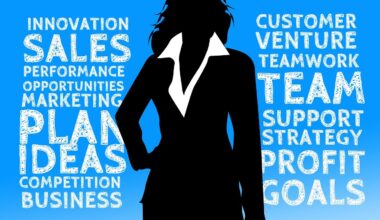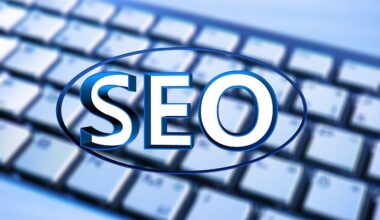Avoiding Common Post-Event Marketing Mistakes
Post-event marketing is essential for maintaining momentum after an event. One common mistake is neglecting to follow up with attendees promptly. After an event concludes, the excitement can fade quickly, making timely communication crucial. Consider developing a follow-up strategy that includes thank you emails to attendees. This not only helps maintain engagement but also shows appreciation for their participation. Within your follow-up communications, it’s essential to include key details about the event. Highlight memorable moments, share photos, and provide links to valuable resources. A well-structured follow-up reinforces the event’s key messages, offering further value to attendees. Incorporate feedback mechanisms as well, such as surveys. Feedback will help you gain insights into the event’s success and areas for improvement. Furthermore, ensure your follow-up aligns with your broader marketing goals. This can create greater alignment within your wider marketing strategy. Also, consider segmenting your audience to tailor your follow-up communications according to their interests. This personalization enhances engagement significantly and can lead to converting leads into customers. Make sure your follow-up isn’t solely focused on sales; providing value should always be your primary objective.
A persistent mistake in post-event marketing is overlooking social media engagement. Social media is a vital platform for post-event discussions and networking. Failure to leverage social media effectively can mean missing opportunities to engage your audience. After your event, consider using your social channels to share highlights and photos. Creating a dedicated hashtag can also encourage attendees to share their experiences. This not only promotes community but also attracts new audiences to your future events. Engage with attendees by liking and commenting on their posts to foster relationships. Another common error is failing to analyze event data promptly. Proper analysis of your event’s performance metrics can yield valuable insights. Data helps identify what worked and what didn’t, thus informing future marketing strategies. Tools like Google Analytics can track visitor engagement and behaviors, while survey responses provide qualitative insights. Do not forget to consider your website analytics as well. An additional point is not reinforcing event content post-event. Sharing recordings or presentations from the event is vital for those who missed it. This can widen your content reach and keeps your audience informed about crucial discussions and topics that emerged during the event.
Building Long-Term Relationships
Another common error in post-event marketing is failing to nurture leads over time. Instead of a one-off follow-up, think of developing a nurturing strategy. This should include regular updates about future events, promotions, and content. Regular engagement keeps your brand front of mind, increasing the chances of conversion down the road. Crafting valuable content for your audience allows you to remain relevant in their eyes. This can entail newsletters, blogs, or exclusive invites to webinars. Don’t forget about the relationships built during the event. Networking opportunities should not end once the event concludes, as maintaining those connections can yield long-term benefits. Regularly reach out to those contacts with personalized messages or invitations to future events. A light touch can maintain relationships without being intrusive, especially in the early stages following an event. Remember that authenticity is key; be genuine in your communications. Another crucial mistake is failing to identify and leverage key influencers. Identify attendees who are likely to amplify your event’s reach. By engaging these influencers, potential exposure for your future events can increase significantly. This will help broaden the reach of your business as well.
Moreover, not integrating multi-channel marketing is detrimental in the post-event phase. Relying solely on one marketing channel limits your reach and its effectiveness. Incorporating various channels like emails, social media, and even traditional media can enhance overall visibility. Ensure consistent messaging across all channels to create a unified campaign. If you share post-event content only on social media, consider complementing it with email marketing. This reinforces your message and allows you to reach audiences who may not frequent social platforms. Diversifying your marketing strategies ensures you capture the attention of varied segments of your audience. A common misstep is not evaluating your competitors’ post-event follow-up strategies. Research what others in your industry are doing after their events. This can provide inspiration and reveal industry trends that might be beneficial to adopt. Utilize competitor insights to enhance your own post-event marketing efforts. Observing successful tactics can aid in avoiding their missteps as well. Explore platforms like LinkedIn for professional insights from industry leaders. Adopting successful strategies from others can only strengthen your marketing outcomes and improve your approach immensely.
Maximizing all Opportunities
A frequent mistake is not leveraging all available resources for post-event marketing. This includes content, testimonials, and partnerships developed before and during the event. Utilize content created around the event, such as blog posts, infographics, or videos. Sharing these resources afterward can keep the conversations alive and engage those who attended. Also, consider converting feedback from surveys into a case study or report. Highlight successes and share it with your audience; this can create additional interest. Testimonial quotes from attendees can further enhance credibility for your future events. Featuring these in your marketing materials serves as social proof that can draw in new attendees or clients. Additionally, incorrect timing of follow-ups can hinder your marketing success. Acknowledging that different companies have distinct timelines for follow-ups is crucial. Some industries appreciate immediate follow-ups, while others may prefer a more relaxed approach. Understanding your audience’s preferences increases the likelihood of engagement in future communications. Ensure follow-ups occur within an optimal time frame that correlates to the event’s nature and audience preferences. Continuously refining your timing and approach can lead to more effective engagements in the future.
Lastly, overlooking developing stronger calls to action is another widespread error. Every piece of post-event communication should include a clear and compelling call to action. This can guide your audience on the next steps they should take. While you may want attendees to engage with post-event content, a subtle nudge can improve their response rates significantly. For example, prompt them to visit your website, register for a subsequent event, or download exclusive resources. Engaging visuals accompanying your CTAs can further entice participation. Moreover, ensure these CTAs align with your overall marketing goals. This could involve presentations, whitepapers, or invitations to join loyalty programs. It’s also critical to personalize these calls to action to increase their effectiveness. Consider segmenting your audience, tailoring CTAs based on their interactions during the event. A good rule to follow is to offer value in trade for their engagement, nurturing the relationship. In addition, ensure to follow up on the performance metrics of your CTAs as well. Regular analysis of these efforts can provide insight for future campaigns, allowing for iterative improvements. Ultimately, a proactive approach in post-event marketing nurtures lasting relationships with your audience.
In conclusion, it is essential to continually refine your post-event marketing strategies. Avoiding common pitfalls such as neglecting follow-ups, social media, and lead nurturing requires a structured approach. Pay attention to multi-channel marketing, resource utilization, and clear calls to action that define your post-event strategy. Learn from your competitors and keep insights from your event readily available. Post-event marketing is an ongoing effort that should be seen as a continuation of engagement rather than an end in itself. Create a plan that evolves based on data, audience feedback, and market trends. Continuing to provide value through insightful content and communications is paramount. Whether it’s through emails, social media, or personal outreach, think about what your audience needs next. Align your goals with their expectations and be ready to offer solutions that cater to their needs. Focused continuous improvement in your follow-up strategy can create long-term success for your events. This will ensure ongoing engagement through layer after layer of valuable communications long after the event is over. Keeping these strategies in mind will help you build a reputation for attentive and effective post-event marketing.



